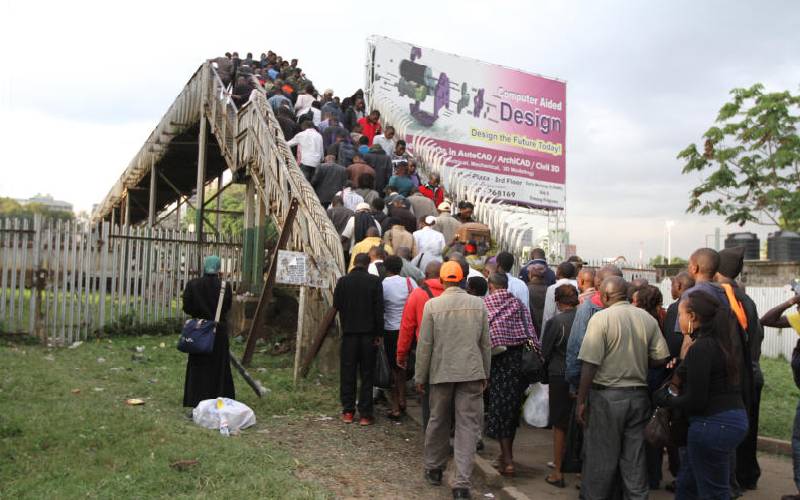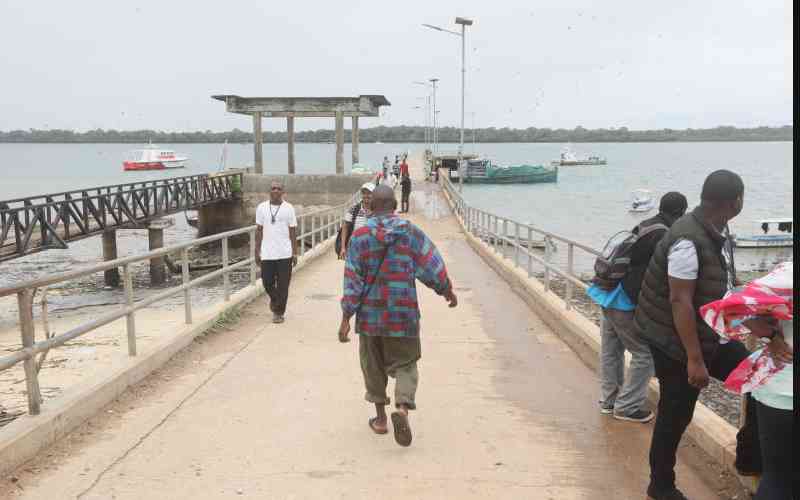
This year, Kenya will join the club of economies valued at Sh10 trillion, cementing its position as the largest economy in the Eastern Africa region.
It may be a feat worth some patriotic pride, but for the individual on the ground, the reality of this figure is difficult to grasp. After all, Kenya is home to an estimated 44.7 million who are either poor or on the brink of poverty.
It is a damning statistic for a country with a population of 47.6 million.
According to a recent World Food Programme (WFP) report prepared in partnership with Unicef and quoting World Bank statistics, 94 per cent of Kenyans do not have any extra cash beyond what they need to survive day to day.
Recent Kenya National Bureau of Statistics (KNBS) data further underlines the fact that a majority of working Kenyans are a payslip away from sinking into poverty.
In fact, official data shows only one in five working Kenyans holds a permanent job. And of these two million employees, 95 per cent take home less than Sh100,000 a month.
When you add in the fact that nearly all Kenyan households spend more than half their income on food, according to census data, the reality of just how hard it is to set aside funds for an emergency hits home.
Income ranking
So how can these millions of Kenyans celebrate the fact that they live in Eastern Africa’s largest economy - beating out neighbours Ethiopia, Tanzania, Uganda, Rwanda, Burundi and South Sudan?
In fact, according to the International Monetary Fund (IMF), Kenya’s economy is bigger than Rwanda, South Sudan, Djibouti, Somalia, Burundi and Uganda’s – combined.
This latest income ranking compares poorly with a grim reality of millions of working poor and jobless youth.
Amid a difficult financial environment, which has seen companies shed jobs while others have shut down, the IMF released a report that showed that the value of what Kenya produces in a year, its gross domestic product (GDP), is poised to surpass the Sh10 trillion mark this year.
This will see it stretch its lead against Ethiopia, which had overtaken Kenya in 2016, to claim bragging rights to being the largest economy in the region.
Assuming the Sh10 trillion were a national cake and each Kenyan were entitled to a slice, then each person’s share would be valued at Sh212,000, up from Sh186,296 in 2018.
Stay informed. Subscribe to our newsletter
However, census data released recently by Treasury Cabinet Secretary Ukur Yatani paints the picture of a struggling economy.
For every 10 working-age Kenyans (aged 15 to 64 as classified by the International Labour Organisation) counted in the 2019 census, only one had some kind of steady income in a day, week or month.
The rest were either unemployed, were looking for the increasingly elusive jobs or had simply given up on the draining ritual of searching for work. This means millions of citizens lack a disposable income, consigning many of them to poverty.
The WFP report found that only 4 per cent of Kenyans have a decent disposable income, meaning a chunk of the rest of the country lives hand to mouth.
“For instance, using a World Bank classification based on different international poverty lines, 34 per cent of the population was considered to be extremely poor (living on less than $1.9 (Sh190) per day), 59 per cent was extremely or moderately poor (less than $3.1 (Sh310) a day), while 94 per cent of the population was either poor or vulnerable (less than $10 (Sh1,000)),” said the report.
Further, of the 2.7 million Kenyans in wage employment – which includes casual employees, part-time workers, directors and partners serving on a regular basic salary contract – less than five per cent, or 132,519, took home more than Sh100,000 in a month.
Savings are also dismal. Official data shows that about 97.5 per cent of the 55 million deposit accounts in the country hold less than Sh100,000.
Deteriorating conditions
While some Kenyans might have decided to put their money in real estate, government securities or under the mattress, a lack of money, more than any other factor, is the reason bank accounts are so thin, according to the 2019 Financial Access Survey done by the Central Bank of Kenya (CBK), KNBS and Financial Deepening Sector (FSD).
Eight out of 10 respondents cited a lack of sufficient money as the reason they were not putting some cash aside for a rainy day.
In the survey, which found that financial conditions for Kenyans had deteriorated compared to three years earlier, more than half cited a lack of regular income as the main reason they were not saving, while the other fraction said they did not have any money to save.
While in a strict sense the country’s unemployment rate stands at less than seven per cent – calculated to include those aged five to 15 and working, and those actively looking for work – a good chunk of Kenyans have since given up on the job search, thus falling out of the labour force.
When you add the tally of job-seekers, 2.6 million, and those aged between 24 and 64 – thus isolating the population that might be in school – it adds up to 4.9 million people that should be working but have no jobs.
The recently released census data shows that there are 26 million, or more than a third, of working-age Kenyans who are either actively looking for work or are inactive, a good number of them after being unsuccessful in job hunting.
The paradox of a rich country with poor people is one that has occupied the minds of policymakers, with CBK saying people cannot eat GDP.
Further, while the census data showed that almost 90 per cent of Kenyan families depend on farming for their daily bread, the government has spent less than 1.5 per cent of its budget on agriculture.
However, payment of debt has gobbled up Sh2 for every Sh5 that the government has collected in taxes.
The difference between what the government spends and what it raises through taxes has been widening, forcing the government to institute austerity measures. But this threatens to reduce the circulation of money in an economy already facing a cash crunch.
Experts say while infrastructural projects help the economy grow and have a lasting effect in the long-run, they do not help increase the circulation of money in the short run.
The United Nations came up with the Human Development Index (HDI) in one of the many attempts to cure the problem of GDP. HDI takes into account indicators like the happiness of a population, how long one lives, standards of living and levels of knowledge.
While on GDP lists Kenya sits below eight African countries, it lags behind 15 when it comes to HDI, an indictment of the government’s policy priorities. Kenyans are poorer in terms of human development when compared to their peers in low middle-income countries (LMIC).
While it might appear unfair to compare Kenya’s poverty levels with some of the other countries considered LMIC, a 2018 World Bank report compared Kenya to its peer Ghana, and the results were disheartening.
“The poverty headcount in Ghana at the LMIC line (34.9 per cent) is 28.8 percentage points less than that in Kenya. Kenya’s depth of poverty at the LMIC line is substantially higher than Ghana and the LMIC aggregate,” noted the report.
Earlier in the year, President Uhuru Kenyatta, realising the plight of a majority of Kenyans, especially the majority farmers, moved to put money in their pockets.
Important focus
The president spelled out measures aimed at jump-starting an economy that has largely been in limbo. The money-making initiatives include efforts to pay government suppliers and break up corruption syndicates that have been siphoning farmers’ earnings.
“I want the economy to be a more important focus than politics. This is because our practice throughout our history has been to pursue the political kingdom as opposed to the economic kingdom. But that focus has been wrong,” said Mr Kenyatta in a televised address at the beginning of the year.
Millions of poor unemployed Kenyans will be eagerly waiting for this economic kingdom to come to down to them.
 The Standard Group Plc is a
multi-media organization with investments in media platforms spanning newspaper
print operations, television, radio broadcasting, digital and online services. The
Standard Group is recognized as a leading multi-media house in Kenya with a key
influence in matters of national and international interest.
The Standard Group Plc is a
multi-media organization with investments in media platforms spanning newspaper
print operations, television, radio broadcasting, digital and online services. The
Standard Group is recognized as a leading multi-media house in Kenya with a key
influence in matters of national and international interest.
 The Standard Group Plc is a
multi-media organization with investments in media platforms spanning newspaper
print operations, television, radio broadcasting, digital and online services. The
Standard Group is recognized as a leading multi-media house in Kenya with a key
influence in matters of national and international interest.
The Standard Group Plc is a
multi-media organization with investments in media platforms spanning newspaper
print operations, television, radio broadcasting, digital and online services. The
Standard Group is recognized as a leading multi-media house in Kenya with a key
influence in matters of national and international interest.










